




 Scales Beck
Scales Beck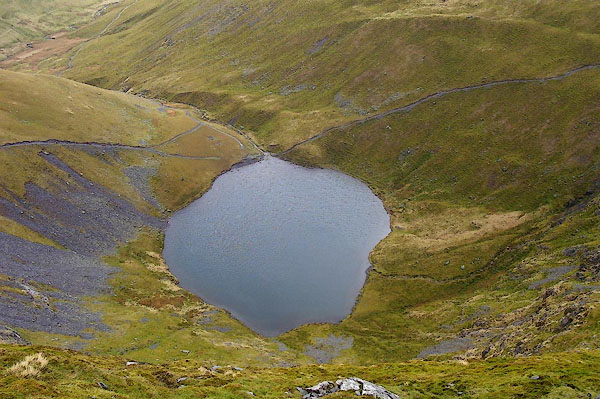
BPC95.jpg (taken 2.5.2008)

Click to enlarge
BPC94.jpg (taken 2.5.2008)
placename:- Scales Tarn
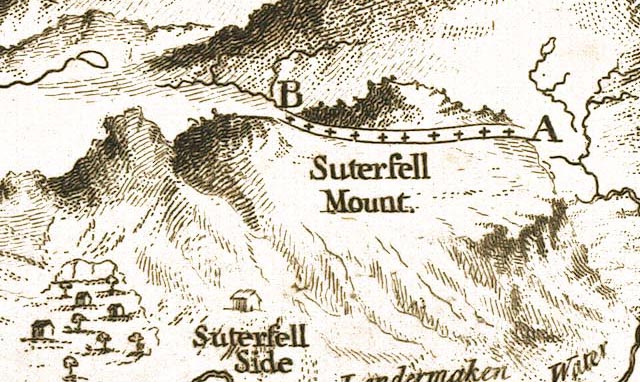
GM1402.jpg
outline; tarn
item:- Carlisle Library : Map 43
Image © Carlisle Library
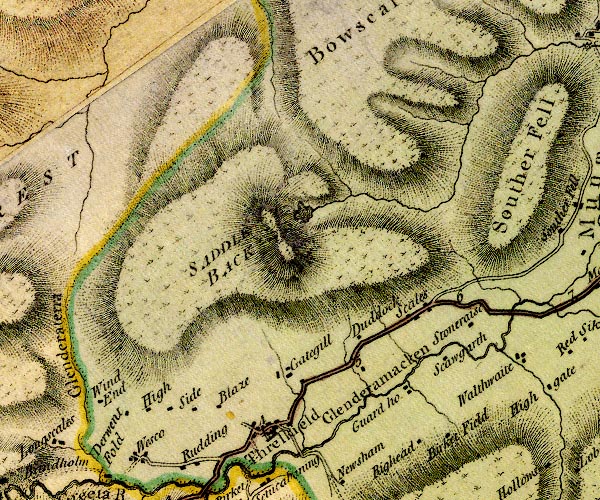
D4NY32NW.jpg
lake, on Blencathra
item:- Carlisle Library : Map 2
Image © Carlisle Library
placename:- Threlkeld Tarn
item:- echoes; volcano
 goto source
goto sourcePage 58:- "... account given me by Mr Crosfeild, who very diligently searched into the nature of this [Saddleback] and other of our Cumbrian mountains."
""Having been often struck with the singular situation and appearance of that piece of water which is commonly known by the name of Threlkeld Tarn, I formed many conjectures respecting its formation. I was for some time of opinion that it had been formed by water spouts frequently breaking on top of the mountain; but when I reflected that water could hardly be powerful enough to excavate solid rocks in so wonderful a manner, I was obliged to give up this opinion, and began to imagine that no agent of nature, except fire, could produce such an astonishing effect. In order to satisfy myself on that head, I determined to inspect narrowly into the minerals of the adjacent country. My first researches were naturally directed to the brooks in the neighbourhood: there I was pleasingly astonished to find vitrified lumps, resembling glass-house slags, in some places lying loose, in others evidently fitted by fusion to the crevices and irregularities of the stones among which they lay. I likewise found many large blocks of stone intermixed with marcasite in such plenty as to be inflammable; in other places there was a stratum of matter, a foot or more in thickness, which lay upon the rocks, and which seemed to have undergone a great degree of heat; above this was a stratum of sand intermixed with clay, pebbles, &c.; above that another stratum like the first; and, finally, a stratum of the common compost of the country soil, covered with peat earth. These appearances induced me to undertake a journey to the mountain; ..."
"..."
 goto source
goto sourcePage 59:- ""[pro]ceeded along the top of this hill, ascending gently about half a mile, when I arrived at the top of Scales-Fell, which may be called the second landing-place. Here I came to the brink of the first of those hideous chasms which furrow the southern face of this mountain. Nearly on a level with this is the Tairn, of which more hereafter. ... I then descended towards the Tairn, which is an oval piece of water, about two hundred yards from East to West, and about an hundred and fifty from North to South; it is surrounded by rocks, except an opening towards the East, where they have evidently broken down. Standing near this opening I discharged my gun, when the echo was inconceivable: it resembled a peal of thunder bursting over my head, and was so prodigiously loud and fierce, that my dog (though a staunch pointer) crept trembling behind me."
""Hence I proceeded along the rivulet which issues from the Tairn, seeking for minerals, and found some, which I sent to Edinburgh, to that incomparable chemist Dr Black, Professor of Chemistry in that University. I likewise found several immense stones, whose original places I could sometimes trace; and one in particular, which must have weighed near a hundred tons, and which must have been forced at least three hundred yards from its original situation: another I remarked of prodigious size separated about a foot and an half from its parent rock, and which cannot have fallen, as it lies now rather higher than the place it came from, as may be plainly traced by the veins and inequalities of each:- Evident marks of some dreadful convulsion! I then returned, partly along the rivulet, and partly the road I came. Upon the whole, I cannot help concluding, that this mountain has been formerly in a volcanic state, and that this Tairn has been the mouth or crater of the mountain. A collateral proof, indeed, I draw from the stones in the neighbourhood, which have almost every one of them the appearance of having been burnt.""
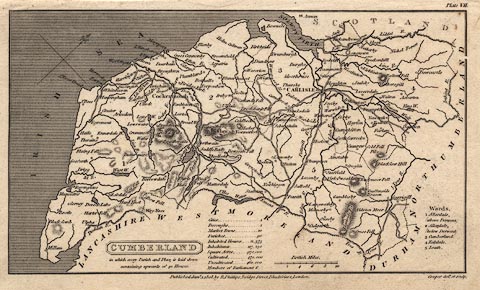 click to enlarge
click to enlargeCOP3.jpg
outline, shaded; lake
item:- JandMN : 86
Image © see bottom of page

OT02NY32.jpg
item:- JandMN : 48.1
Image © see bottom of page
placename:- Purple Tarn
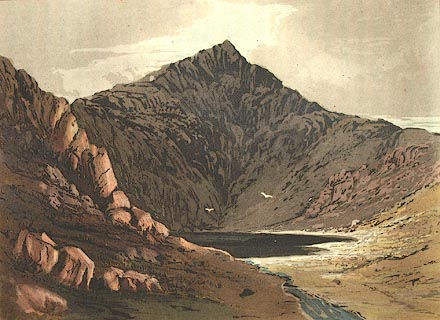 click to enlarge
click to enlargeFW0103.jpg
Atkinson Pike in the background.
Tipped in opposite p.4 in A Picturesque Tour of the English Lakes.
item:- Dove Cottage : 1993.R566.3
Image © see bottom of page
item:- depth, Scales Tarn; volcano; caldera
 goto source
goto sourcePage 38:- "Scales Tarn, on the east end of the mountain Saddleback, is an oval piece of water covering an area of three acres and a half, its two diameters being 176 and 124 yards, its depth 18 feet; and uninhabited by the finny tribe. Some very exaggerated descriptions of this tarn have found their way into the history of Cumberland and other publications. From its gloomy appearance, occasioned by being overshadowed by steep rocks, its depth was supposed to be very great, and it has been represented as the crater of an extinct volcano; an assumption not supported by present appearances. Its stream, nearly encompassing Souterfell, is called the Glenderamakin, which, passing Threlkeld, joins that from Thirlmere to form the Greta."
 goto source
goto sourcePage 69:- "... in a deep hollow, below a rocky precipice on its [Saddleback's] eastern end, a small, dark tarn is curiously placed."
placename:- Scales Tarn
 goto source
goto sourcePage 65:- "..."
"[Blancathra] ... At the base of an enormous perpendicular crag, called Tarn Crag, depending from the top, is Scales Tarn, a beautiful circular piece of transparent water, with a well defined shore, covering an area of three acres and a half, and being eighteen feet deep. Here you are engulphed in a basin of steeps, having Tarn Crag on the north, the rocks falling from Sharp Edge on the east, and on the west the soft turf on which the descent has been made. ..."
placename:- Scales Tarn

GAR2NY32.jpg
"Scales Tarn"
outline with shore form lines, lake or tarn
item:- JandMN : 82.1
Image © see bottom of page
item:- stars at noon
 goto source
goto sourcePage 99:- "..."
"Here, too, lies another wonder,- that tarn (Scales Tarn) which is said to reflect the stars at noonday,- a marvel which we by no means undertake to avouch. The tarn is so situated at the foot of a vast precipice, and so buried among crags, that the sun never reaches it, except through a crevice in early morning. This dark water is one of the attractions which bring strangers to this mountain; ..."
"..."
 goto source
goto sourcePage 100:- "... he [a visitor] was coaxed onwards to the tarn, where, however, he could see no stars, though it was noonday. ... ... Mr. Green, with his companion Mr. Otley, was among the earlier adventurers who stood on the highest ridge [of Saddleback]. He was so accurate an observer that his descriptions of unfrequented and unalterable places will never be antiquated. "From Linthwaite Pike," he says, "on soft green turf, we descended steeply, first southward, and then in an easterly direction to the Tarn; a beautiful circular piece of transparent water, with a well-defined shore. Here we found ourselves engulphed in a basin of steeps, having Tarn Crag on the north, the rocks falling from Sharp Edge on the east, and on the west, the soft turf on which we had made our downward progress. These side-grounds, in pleasant grassy banks, verge to the stream issuing from the lake, whence there is a charming opening to the town of Penrith; and Cross Fell seen in extreme distance. ... ""
placename:- Scales Tarn

PST2NY32.jpg
"Scales Tarn"
lake
item:- JandMN : 162.2
Image © see bottom of page
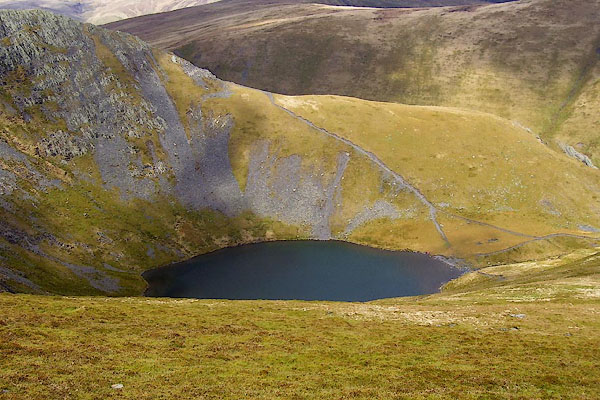
BPC96.jpg (taken 2.5.2008)
The surface of that sable tarn,
In whose black mirror you may spy
The stars while noonday lights the sky."
